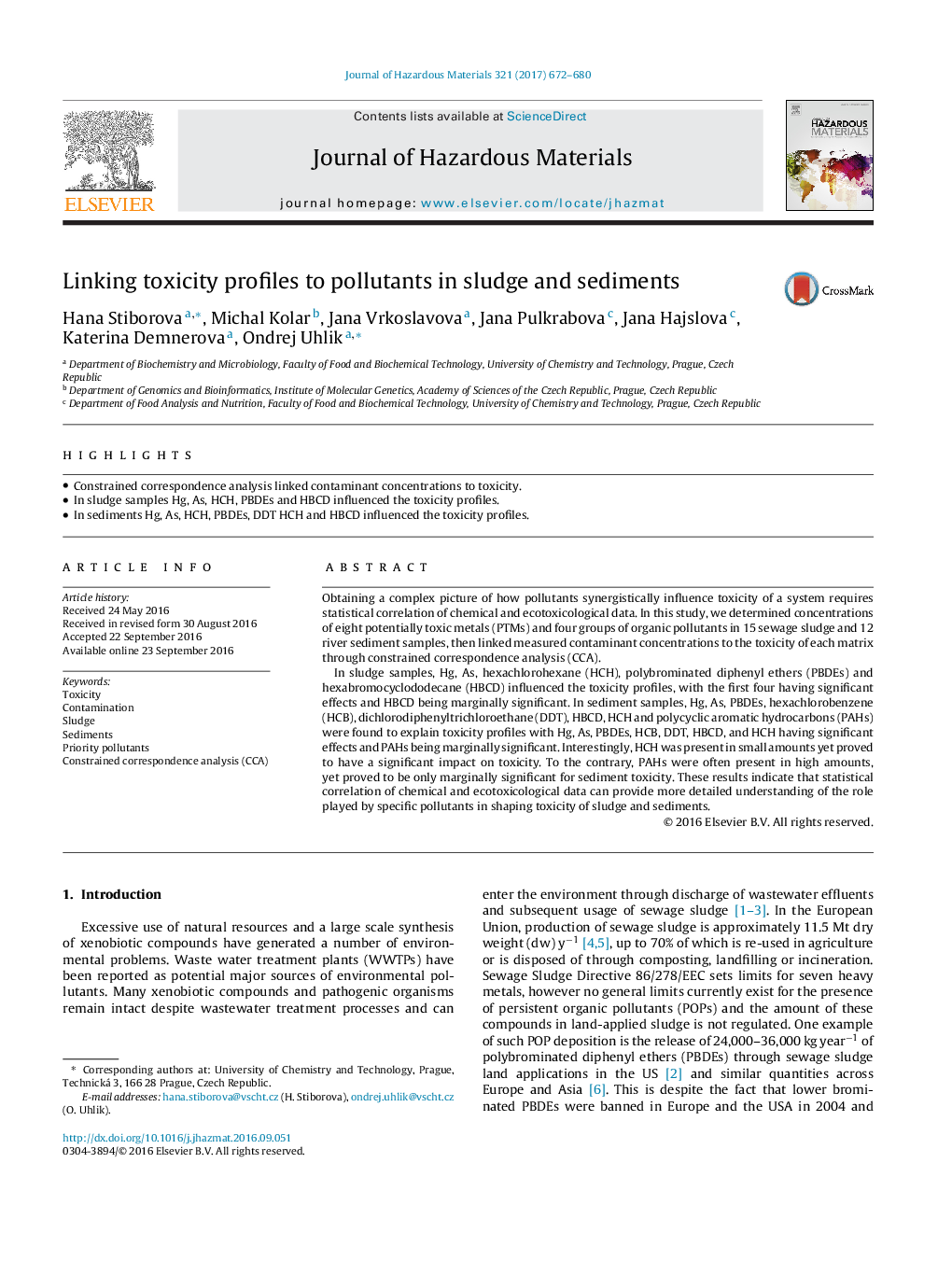| Article ID | Journal | Published Year | Pages | File Type |
|---|---|---|---|---|
| 4980093 | Journal of Hazardous Materials | 2017 | 9 Pages |
Abstract
In sludge samples, Hg, As, hexachlorohexane (HCH), polybrominated diphenyl ethers (PBDEs) and hexabromocyclododecane (HBCD) influenced the toxicity profiles, with the first four having significant effects and HBCD being marginally significant. In sediment samples, Hg, As, PBDEs, hexachlorobenzene (HCB), dichlorodiphenyltrichloroethane (DDT), HBCD, HCH and polycyclic aromatic hydrocarbons (PAHs) were found to explain toxicity profiles with Hg, As, PBDEs, HCB, DDT, HBCD, and HCH having significant effects and PAHs being marginally significant. Interestingly, HCH was present in small amounts yet proved to have a significant impact on toxicity. To the contrary, PAHs were often present in high amounts, yet proved to be only marginally significant for sediment toxicity. These results indicate that statistical correlation of chemical and ecotoxicological data can provide more detailed understanding of the role played by specific pollutants in shaping toxicity of sludge and sediments.
Related Topics
Physical Sciences and Engineering
Chemical Engineering
Chemical Health and Safety
Authors
Hana Stiborova, Michal Kolar, Jana Vrkoslavova, Jana Pulkrabova, Jana Hajslova, Katerina Demnerova, Ondrej Uhlik,
